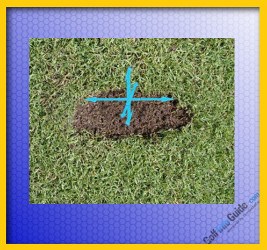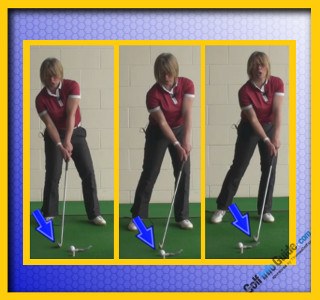
The first thing to acknowledge is that each golf shot that is struck with the iron or a hybrid should leave some mark to show where the shot has been struck from. If you play a round of golf trying to be a green keeper's best friend you probably aren't striking the golf ball correctly.
From a sand wedge through to a seven iron, you should be taking fairly large divots at least the size of a dollar bill and around a half inch in depth. The location of the divot is also incredibly important. Many golfers struggle with divot taking because they take the divot from the wrong area. This normally results in fat shots where the club hits the ground before the golf ball.
 Next time you are at a grass practice area or on the golf course, but not in a competition, consider marking the location of a golf ball with a tee peg on the far side opposite to where you're setting up. Then go ahead and make your normal swing, focusing on taking a divot. Notice where your divot has appeared from – is it behind the tee peg, level with a tee peg, or in front of the tee peg.
Next time you are at a grass practice area or on the golf course, but not in a competition, consider marking the location of a golf ball with a tee peg on the far side opposite to where you're setting up. Then go ahead and make your normal swing, focusing on taking a divot. Notice where your divot has appeared from – is it behind the tee peg, level with a tee peg, or in front of the tee peg.
If your body weight is too far back and / or you had a scooping action with your wrists, you may be prone to taking divots before the ball, resulting in fat shots and a severe loss of distance. Try to focus on shifting your body weight correctly and producing a downward blow as you strike the ball. This should increase your accuracy, consistency and the distance the ball will fly.
The same divot position should apply to your longer irons and hybrids but notice how the depth of the divot should be shallower due to a more forward ball position and a more sweeping approach to the swing arc. Using your divots as diagnostic tool, you can gain valuable feedback on the quality of strike from your swing.






